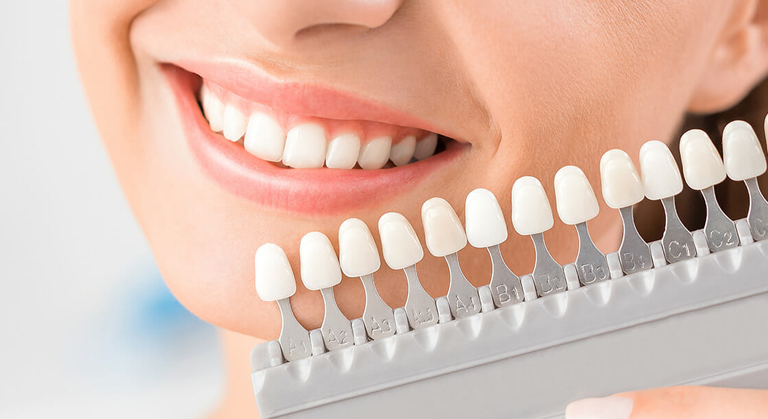Crowns & Bridges

Dental Crowns or Teeth Crowns are dental restoration caps which are fitted on a portion of tooth lies above the gums. In this way dental crown becomes external surface of tooth giving it required protection and beautiful looks. As we get older, many of us discover that our teeth that are no longer as structurally sound as they were in our youth. Your regular dentist will usually be able to recognize problem areas which may lead to tooth damage and a need for dental crowns. If the entire surface of the tooth is damaged, but the root system has remained intact, your dentist will usually suggest that a dental crown be put in place. Dental crowns are also capable of replacing missing teeth entirely. The dental crown is secured to the teeth on either side using a bridge section which connects the two dental crowns.
Metals used in crowns include alloys that have a high content of gold or platinum, or base-metal alloys (for example, cobalt- chromium and nickel-chromium alloys). Metal crowns withstand biting and chewing forces well and probably last the longest in terms of wear down. Also, metal crowns rarely chip or break. The metallic color and the lack of marginal fit around the natural tooth are the major drawback if such metal crowns.
Porcelain-fused-to-metal dental crowns (PFM) are somewhat of a hybrid between metal and porcelain crowns. When they are fabricated, the dental technician first makes a shell of metal that fits over the tooth. A veneering of porcelain is then fused to this metal (in a high-heat ceramic furnace), giving the crown a white tooth-like appearance.
The metal that lies underneath the crown’s porcelain can sometimes be visualized as a dark line found at the crown’s edge .We usually try to position this dark edge just underneath the tooth’s gum line. But, if the gums happen to recede, or if it is very thin, the dark/ metallic line can show, thus ruining the crown’s appearance.
Due to their life-like translucency, all Ceramic / metal free Ceramic crowns can be the most cosmetically pleasing of all the different types of dental crowns. For this reason, they often make an excellent choice for restoring front teeth. They are a biocompatible alternative for people suffering from metal allergies.
Our conventional PFM (Porcelain Fused to Metal) crowns do have an 85-90 percentage natural appearance and are highly enduring. However, being coated over metal, ceramic will not show the same optical properties as that of a natural tooth.
It is a type of all-ceramic crown, which is made of lithium disilicate- a material that is Light, thin and translucent having the commonly known brand name, E-Max.
Zirconium is a relatively new material that combines the strength of metal with the aesthetics of porcelain crowns. High translucent zirconia and layered zirconia crowns have become a more popular choice today. They are layered with glass ceramics for better aesthetics.
They are non-layered single block milled zirconia crowns. Full-Strength Zirconia / High strength (1200 Mpa Flexural strength) are used for the most functionally demanding cases. One of the brand Brux-Zir have proven to be long lasting in bruxers and clenchers – thus proving to be an aesthetic alternative to cast gold and metal occlusal PFMs.